Pomegranate and rose daisy is a mini winter sour, using bespoke grenadine and honey rose petal syrup mixed with lemon and lime juice, Dry Gin, over crushed ice, garnished with a fresh strawberry and a twist of Persian rose fairy floss. Pomegranate and rose daisy offers a seasonal pairing of rich, warm pomegranates and delicate rose petals with honey, citrus, and the refreshing juniper of Dry Gin. The pomegranate and rose daisy follows fancy Daisy recipes from the 1910’s – the elaborate garnish uses a fresh strawberry nestled on crushed ice over which the drink is served, and the amazing texture and delicate flavour of pink rose Persian fairy floss for a whimsical miniature pink pomegranate and rose winter sour.
What is a Daisy?
David Wondrich (2015: 128-131) in Imbibe details that the Daisy is a Sour calling for the following formula of ingredients and presentation:
- Citrus: lemon, lime, orange
- Sugar: powdered sugar or later gum syrup
- Cordials: such as orange, cherry, and chartreuse
- Syrups: such as raspberry, orgeat and later grenadine
- Spirit: Brandy, Whiskey, Santa Cruz Rum, and later Dry Gin
- Carbonated water: to top
- Crushed ice: in serving glass
- Garnish: increasingly fancy garnishes of fresh fruit and mint, use of straws
- Glassware: fancier glassware such as goblets used in later 1910’s fancy Daisy recipes
The Daisy formula became increasingly complex over time with elaborate presentation and additional ingredients including different syrups, cordials, and spirits. For a detailed discussion of the history and development of the Daisy see David Wondrich (2015: 126-132) in Imbibe. Wondrich (2015: 129) elaborates that later and fancier versions of the Daisy in the 1910’s featured English Dry Gin and raspberry and later grenadine syrup served over crushed ice in fancy ‘goblets’ or ‘steins’, garnished with fresh fruit, and mint, and served with straws. For examples of the pairing of spirits with cordials and syrups, such as Brandy with Chartreuse, Gin and Santa Cruz Rum with Maraschino and Whiskey with Orgeat, see Charles S. Mahoney’s (1910: 165-166) Hoffman House Bartenders’ Guide Daisy recipes. For more on the history of the Daisy and modern variations see my posts on Cherry shrub daisy, Blood orange pomegranate daisy, and Carrot daisy.
A note on sources: Vintage Daisy recipes 1870’s to 1910’s
I have made a close reading of vintage recipes from the 1870’s to the 1910’s and the helpful notes on execution of David Wondrich (2015: 132) in Imbibe. The style of Daisy recipe informing the pomegranate and rose daisy is the later and fancier Daisies of the 1910’s. I have also made reference to the early 1876 recipe of Jerry Thomas (1876: 88) in his Bar-tender’s Guide important for being the first Daisy recipe in print (Wondrich 2015: 128), and in relation to the pomegranate and rose daisy, for it’s shake and strain method.
Ingredients & measures
For Daisy ingredients and measures I have referred in particular to the following recipes:
- Jerry Thomas (1876: 88-89) Bar-tender’s Guide – Brandy Daisy with Orange Cordial – first printed Daisy recipe (Wondrich 2015: 128)
- Jacques Straub (1913: 63-4) Straub’s Manual of Mixed Drinks – Raspberry Gin Daisy
- Hugo Ensslin (1916-17: 39) Recipes for Mixed Drinks – Pomegranate Gin Daisy
Method
For the method used to make a Daisy I have referred to the recipes of:
- Jerry Thomas (1876: 88-89) Bar-tender’s Guide – Shake & Strain
- J.A. Grohusko (1910: 30) Jack’s Manual – Shake & Strain
- Hugo Ensslin (1916-17: 39) Recipes for Mixed Drinks – Build in the Glass
Brandy Daisy with Orange Cordial: Jerry Thomas 1876 Bar-tender’s Manual Appendix
David Wondrich (2015: 128) in Imbibe details that the first printed recipe for the Daisy using orange cordial appears in Jerry Thomas’ 1876 Bar-tender’s Guide. It is in the Appendix to the 1876 edition of Jerry Thomas’ (1876: 88) Bar-tender’s Guide that the root formula for the Daisy is provided – interestingly this is a Brandy Daisy calling for a small bar glass and using gum syrup, orange cordial, lemon juice, brandy, shaved ice, and Seltzer water. The other variations using Whiskey, Gin and Rum are all described as ‘Made in the same way as Brandy Daisy…’ (Thomas 1876: 88-89).
Raspberry Gin Daisy: Jacques Straub 1913 in Straub’s Manual of Mixed Drinks
Jaques Straub’s Daisy recipes in Straub’s Manual of Mixed Drinks (1913:63-64) include recipes for brandy, whiskey, rum, and gin variations as well as a non-alcoholic ‘June Daisy’ which features ginger ale. There are no detailed instructions for the method used in making these variations on the Daisy – rather the ingredients are listed along with the serving vessel and garnish ‘In Goblet Fine Ice. Fruits’ (Straub 1913: 63).
Straub’s ‘Gin Daisy’ recipe calls for:
“Juice ½ Lemon.
Jacques Straub (1913: 63). Straub’s Manual of Mixed Drinks. (Francis Welsh: Chicago).
1 Jigger Gin.
½ Jigger Raspberry Syrup.
In Goblet Fine Ice.
Fruits.”
David Wondrich (2015: 132) writes of Straub’s recipes that they do not use carbonated water – this is a point I wish to draw attention to as I do not use any soda water in the pomegranate and rose daisy instead using extra crushed ice for dilution. In addition, it is interesting that no sweetener is used – instead, the sweetness and flavour comes from the raspberry syrup.
Pomegranate Gin Daisy: Hugo Ensslin 1916-17 in Recipes for Mixed Drinks
As discussed by David Wondrich (2015: 132) in Imbibe Hugo Ensslin (1916-17: 39) in his Recipes for Mixed Drinks includes a page devoted to ‘Daisies’ using brandy, rum, gin and whiskey which call for:
“Juice of ½ Lime and ¼ Lemon
Hugo Ensslin (1916-17: 39). Recipes for Mixed Drinks. Hugo Ensslin: New York.
1 teaspoonful Powdered Sugar
2 dashes Grenadine
1 drink of liquor desired
2 dashes Carbonated Water”
The later recipes of Ensslin (1916-17: 39) use grenadine and add carbonated water in comparison to the earlier raspberry syrup and absence of carbonated water in Straub’s (1913: 63) Daisy variations. The use of tarter grenadine sees the addition of powdered sugar in Ensslin’s (1916-17: 39) recipe earlier missing in Straub’s (1913: 63) recipe where the sweeter raspberry syrup could sweeten and flavour. Ensslin’s (1916-17: 39) recipe also uses a mix of lime and lemon whereas Straub’s (1913: 63) recipe only calls for lemon.
How to make a Daisy: Shake & Strain; Build in the Glass
There are two methods for making a Daisy: shaking and straining into a vessel with fine ice and building in the glass, stirring with fine ice.
Shake & Strain
Jerry Thomas (1876: 88) in his 1876 Bar-tender’s Guide offers a method of shaking and straining. Thomas’ method is interesting because it shows that the drink could be made by shaking and straining and given the other recipes such as that of Straub (1913: 63) and Ensslin (1916-17: 39) refer to filling the serving glass with crushed ice perhaps Thomas (1876: 88) means the drink to be strained into a serving glass ‘half full of shaved ice’. He writes:
“Fill glass half full of shaved ice.
Jerry Thomas (1876: 88). Bar-tender’s Guide. Dick & Fitzgerald: New York.
Shake well and strain into a glass and fill up with Seltzer water from a syphon.”
In Jack’s Manual by J.A. Grohusko (1910: 46) the method for making a Brandy Daisy calling for sugar, lemon, lime and orange juice and brandy, along with cracked ice and carbonated water is also to shake and strain, he writes:
“Fill glass with cracked ice.
J.A. Grohusko (1910: 30). Jack’s Manual. McClunn: New York.
Shake and strain. Fill with fizz water and serve.”
Build in the Glass
The detailed build in the glass method offered by Ensslin (1917: 39) for making ‘Daisies’ is worth reviewing he writes:
“Use silver mug, put in above ingredients, fill up with fine ice, stir until mug is frosted, decorate with fruits and sprays of fresh mint and serve with straws.
Hugo Ensslin (1916-17: 39). Recipes for Mixed Drinks. Hugo Ensslin: New York.
The use of fancier glassware, complex garnishes and straws is characteristic of these later style of elaborate Daisy variations which Wondrich (2015: 131-2) calls ‘New School’ or ‘fancy’ Daisy’s.
How is the pomegranate and rose daisy different?
In developing the pomegranate and rose daisy I have drawn on the formulae for the Daisy of Straub (1913: 63) in Straub’s Manual of Mixed Drinks and of Ensslin (1916-17: 39) in Recipes for Mixed Drinks. Following Ensslin (1916-17: 39) I have used pomegranate syrup which has a more acidic profile, so I have introduced a sweetener in the form of rose petal infused honey which marries well with the warmth and tartness of the pomegranate syrup. Following Straub (1913: 63), I have not used carbonated water but relied on finely crushed ice for dilution. The method differs from that detailed by Ensslin (1916-17: 39) as build in the glass, I opt instead for a shake and strain over finely crushed ice as detailed in the early recipe of Jerry Thomas in the Appendix to his (1876: 88) Bar-tender’s Guide, and in J.A. Grohusko’s (1910: 30) Jack’s Manual. Shaking and straining over crushed ice offers more control over the very elaborate presentation. The complex and detailed garnishes and fine crushed ice are in keeping with the very fancy daisy recipes of the 1910’s including those of Grohusko (1910: 30), Straub (1913) and Ensslin (1916-17: 39).
Lime & Lemon
I use a mixture of lime and lemon juice following the recipe offered by Hugo Ensslin (1916-17: 39).
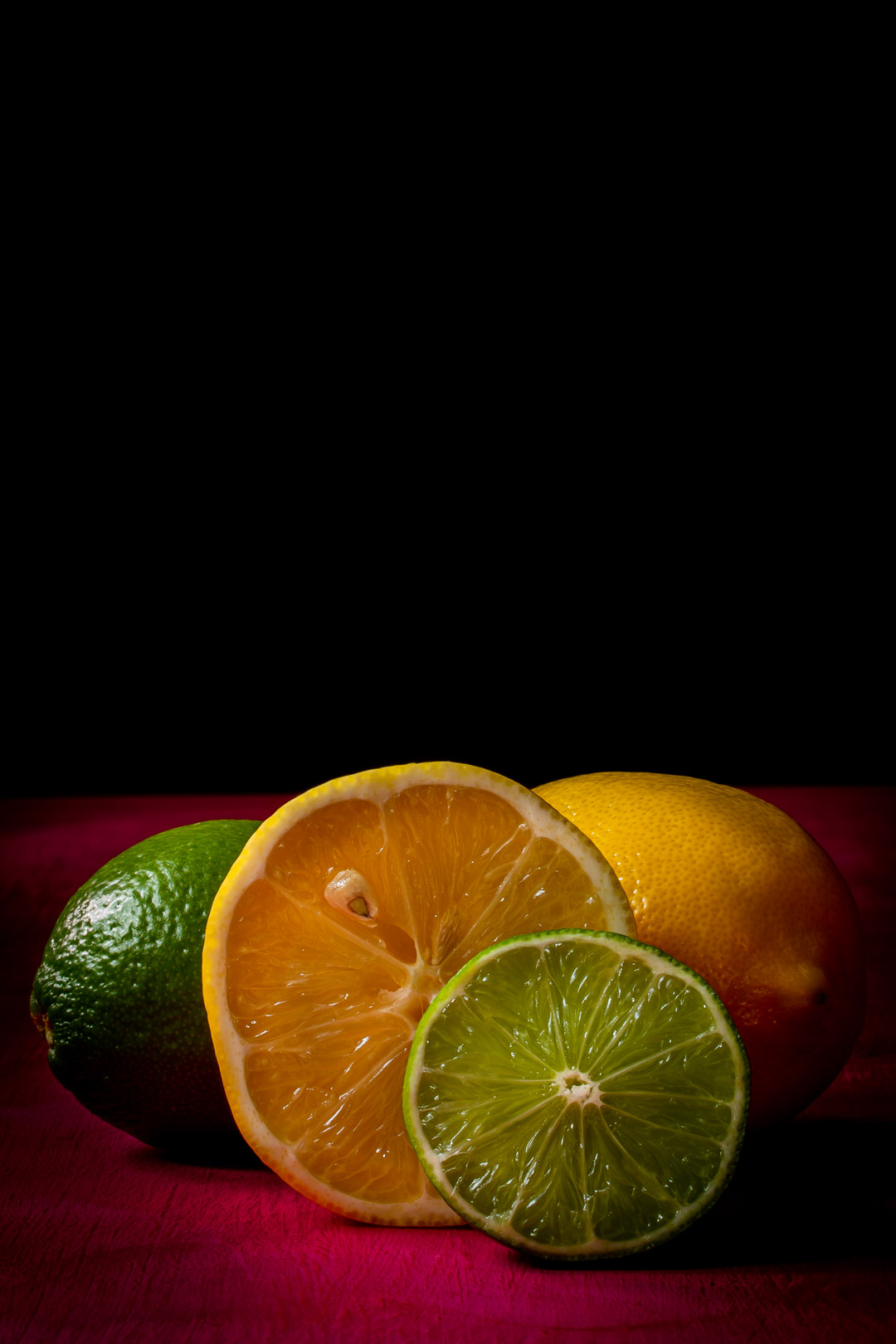
Rose Honey Syrup
Instead of powdered sugar or gum syrup, an orange cordial, or a raspberry syrup, I have sweetened the pomegranate and rose daisy with a rose petal infused honey syrup which works well with the flavour profile of the bespoke grenadine.
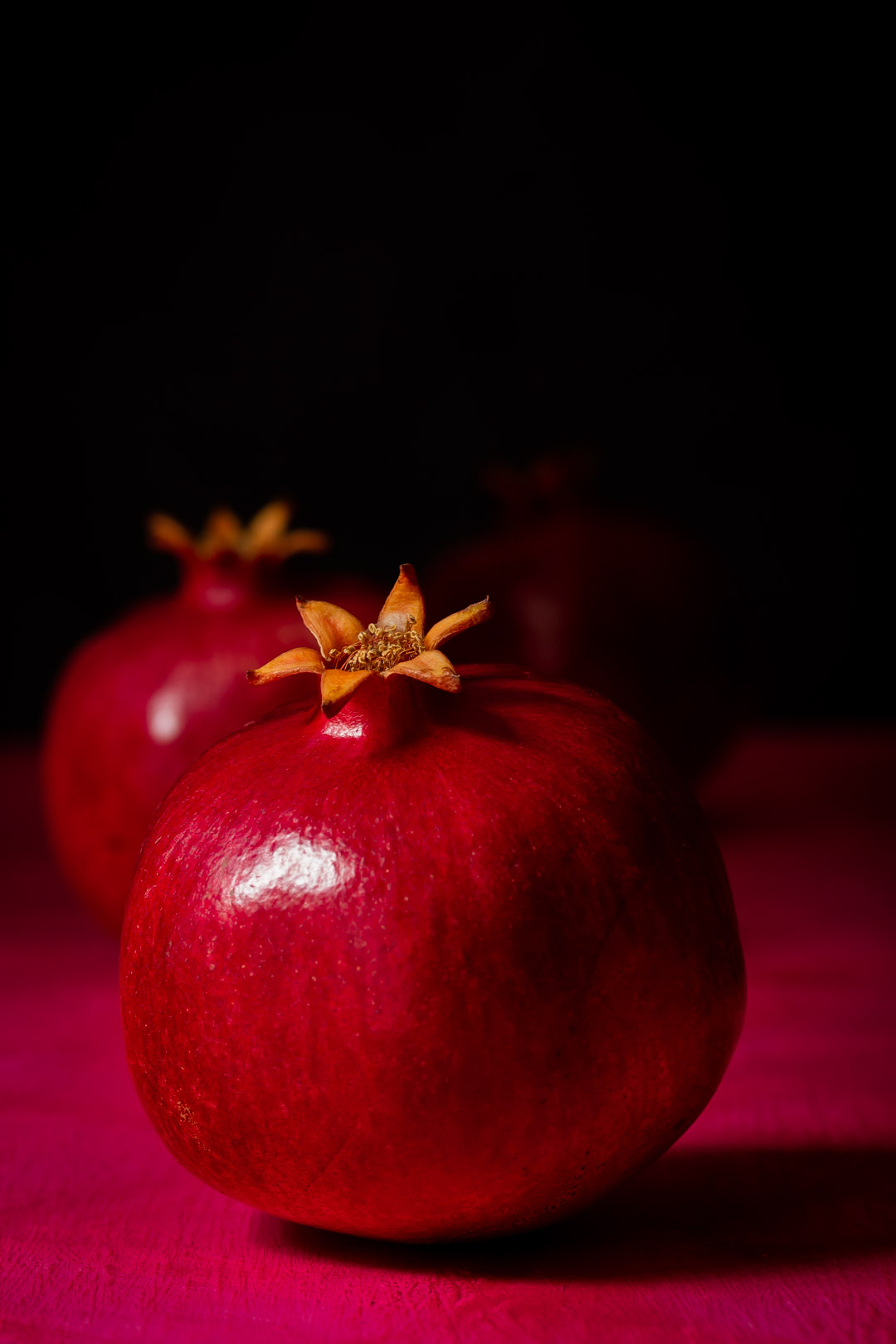
Bespoke Grenadine – pomegranate syrup with pomegranate molasses and rose water
The pomegranate and rose daisy uses a bespoke grenadine featuring fresh pomegranate and lemon juice, low GI sugar and rose water along with homemade pomegranate molasses. The recipe for the grenadine is available in my post on homemade grenadine syrup which offers detailed tips on how to prepare pomegranates for juicing and how to make your own from scratch pomegranate molasses and grenadine. It does take some time to make this syrup, but it is well worth it because of the intense pomegranate flavour that it preserves, and which can be used in cocktails and desserts.
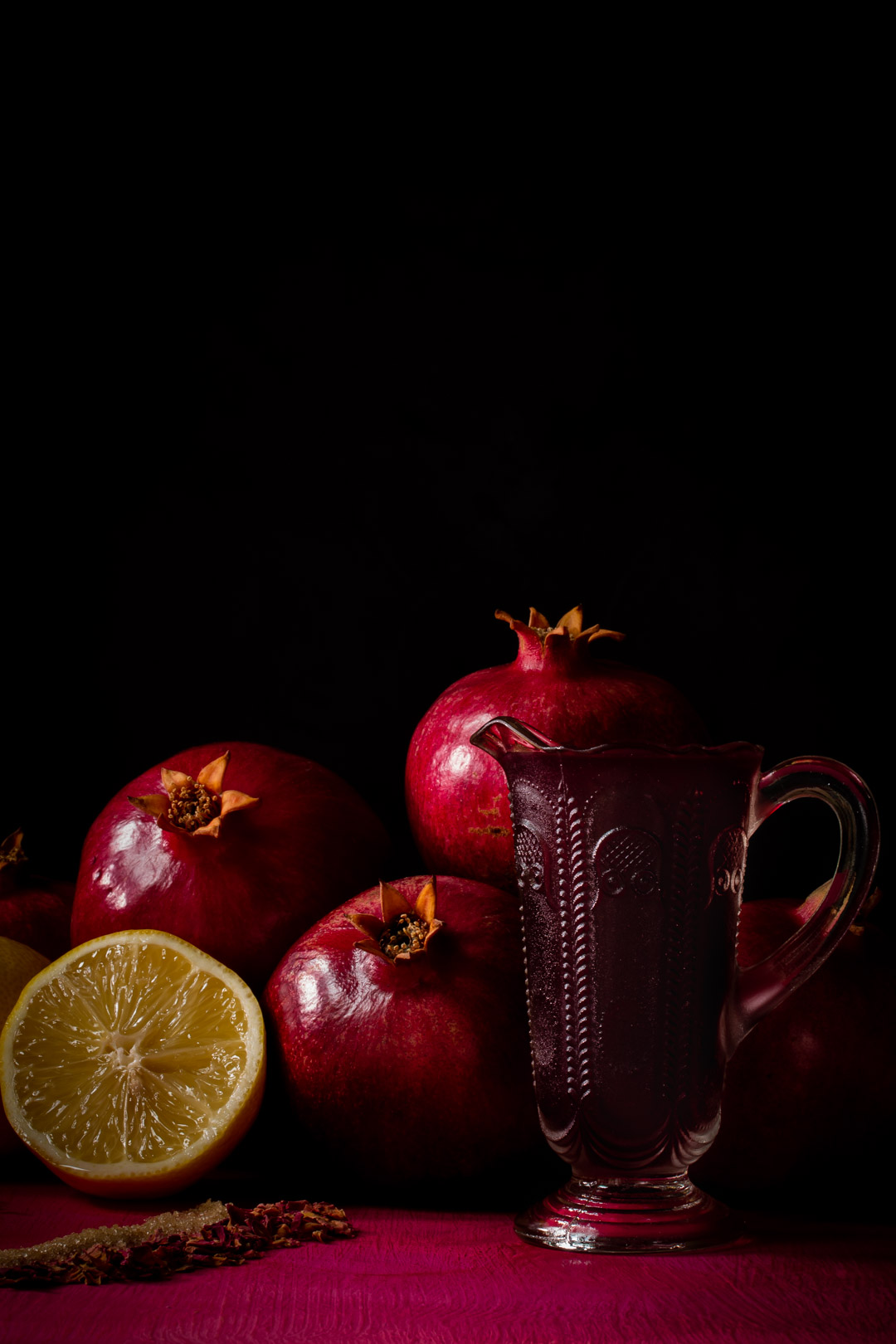
Dry Gin, freshness of juniper
I have used a Four Pillars Dry Gin in keeping with the popularity of Dry Gin in the later fancier style Daisy formulae from the 1910’s – this style of gin features a big fresh flavour of juniper that works wonderfully with the tartness of citrus and pomegranate in this Sour style cocktail.
Crushed Ice for dilution rather than carbonated water
I have used a glass full of crushed ice for dilution and fancier presentation of the pomegranate and rose daisy rather than diluting with carbonated water. This option is informed by the recipe of Jacques Straub (1913: 63) which does not use carbonated water.
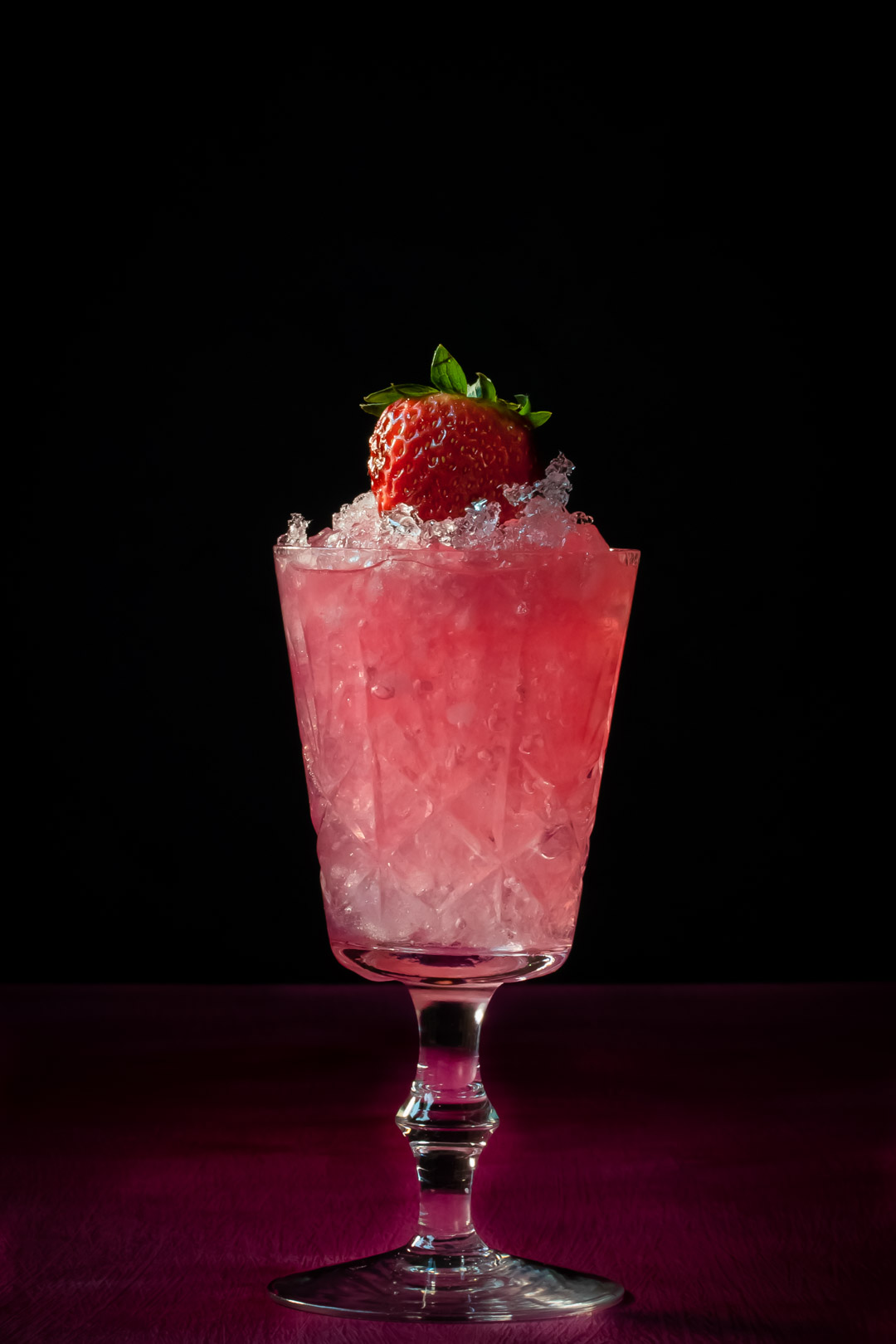
Mini cocktail: A note on measures
The pomegranate and rose daisy is a miniature version of the vintage Daisy formula using ½ measures of spirit and citrus in Hugo Ensslin’s (1916-17: 39) detailed recipe. The grenadine and honey syrup I have slightly increased. I have left out the carbonated water to allow the grenadine and rose flavours to be more intense and stand up to the increased amount of crushed ice I am using. Mini cocktails are great for creating an intense flavour experience that is all about the ingredients, their flavours and the way they come together rather than their alcohol content per se.
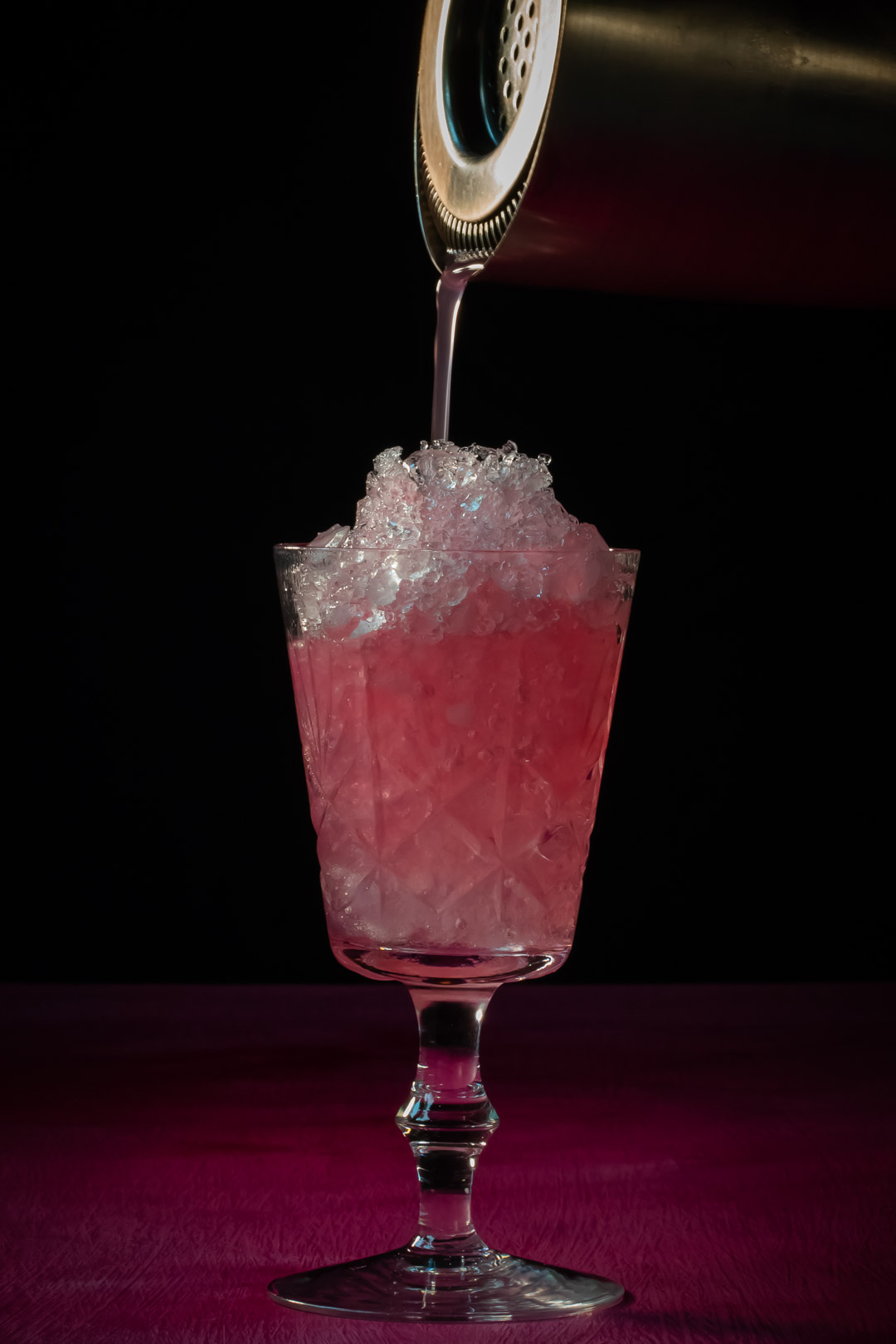
Method: Shake & Strain over Crushed Ice
To allow more control over the styling using the crushed ice I have opted to shake and strain the pomegranate and rose daisy rather than stirring in the glass with finely crushed ice. Shaking and straining means you can precisely build up the crushed ice in the glass and then pour over the drink carefully and place the garnish into the cap of crushed ice on top of the drink. This shake and strain method is detailed by Jerry Thomas (1876: 88) although he uses less crushed ice opting for only half a glass of fine ice, whereas in this recipe I fill the glass with finely crushed ice.
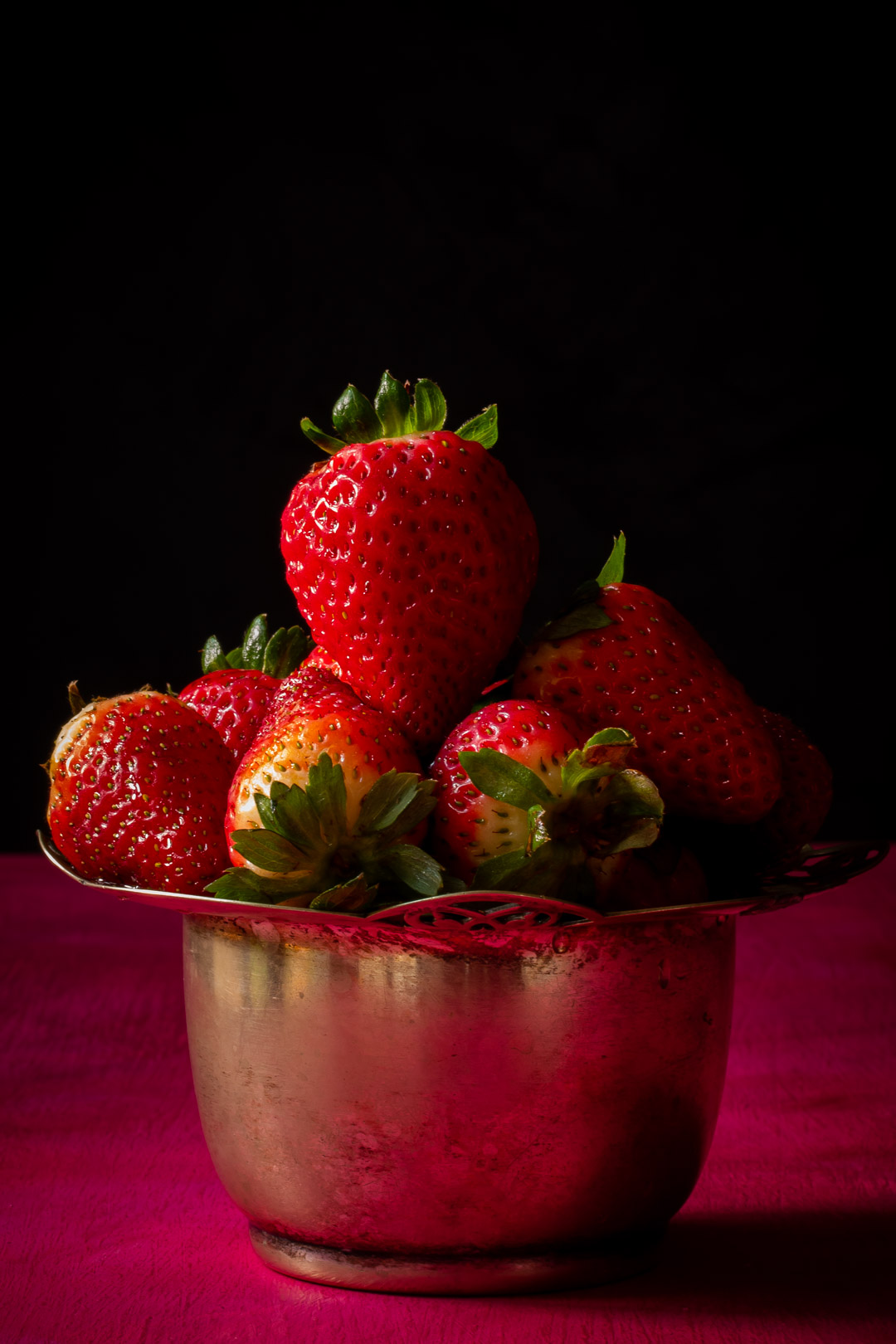
Fancy Mini Daisy: Vintage cocktail glass, crushed ice, strawberry & Persian rose fairy floss garnish
The garnish for the pomegranate and rose daisy is a single fresh strawberry that sits on top of the cap of ice over which the pink pomegranate and rose daisy has been poured. For a whimsical touch and to bring out the rose aroma and flavour in the cocktail I have used a twist of Persian rose flavoured fairy floss as an elaborate addition to the garnish that fits with the pink drink and the deep contrasting red of the strawberry. The pomegranate and rose daisy, is served in a miniature vintage wine goblet or cocktail glass with cut glass embossing and fancy stem. The fancy fruit and fairy floss garnish and beautiful pink colour of this drink offer a cheering mini winter sour celebrating pomegranate season.
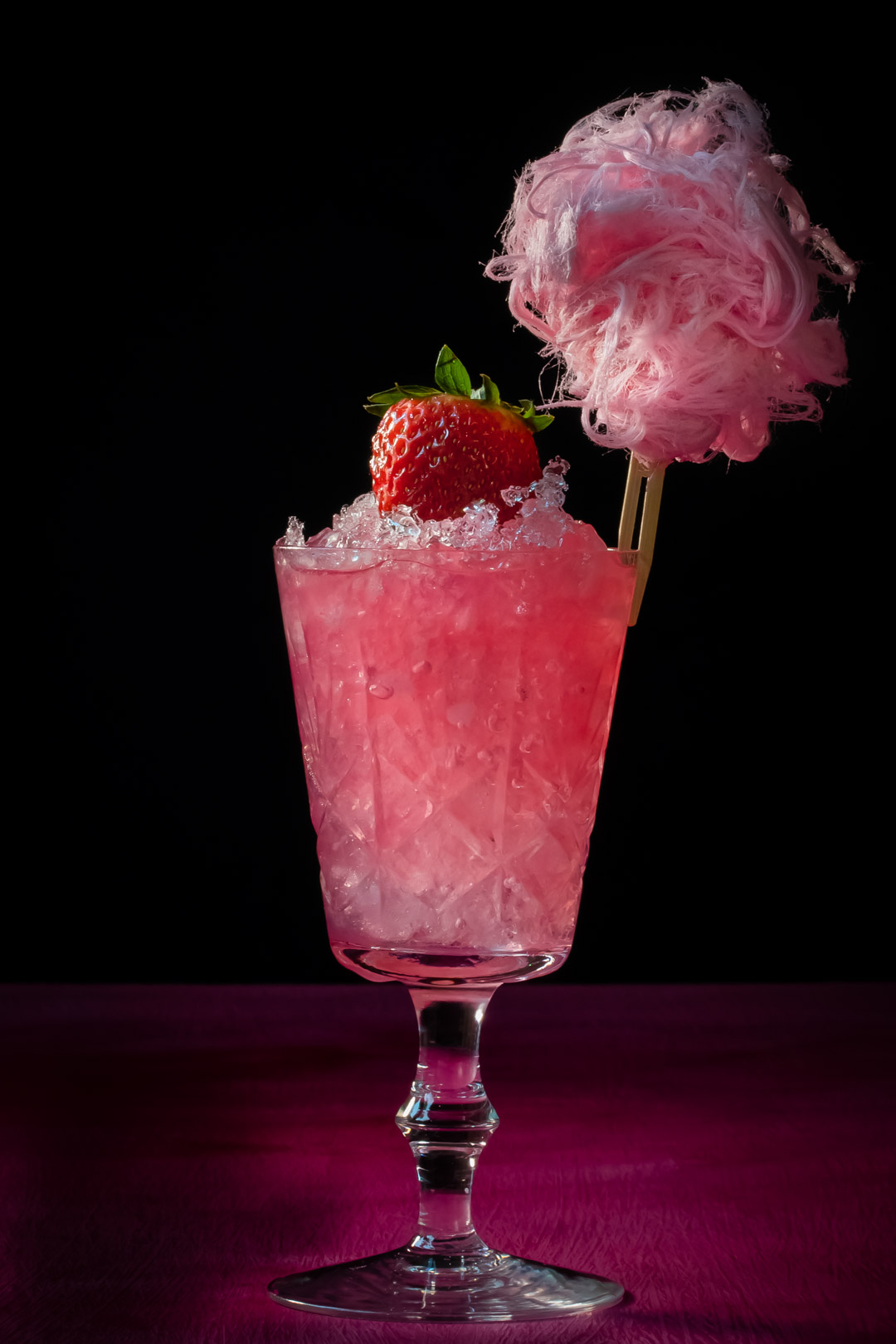
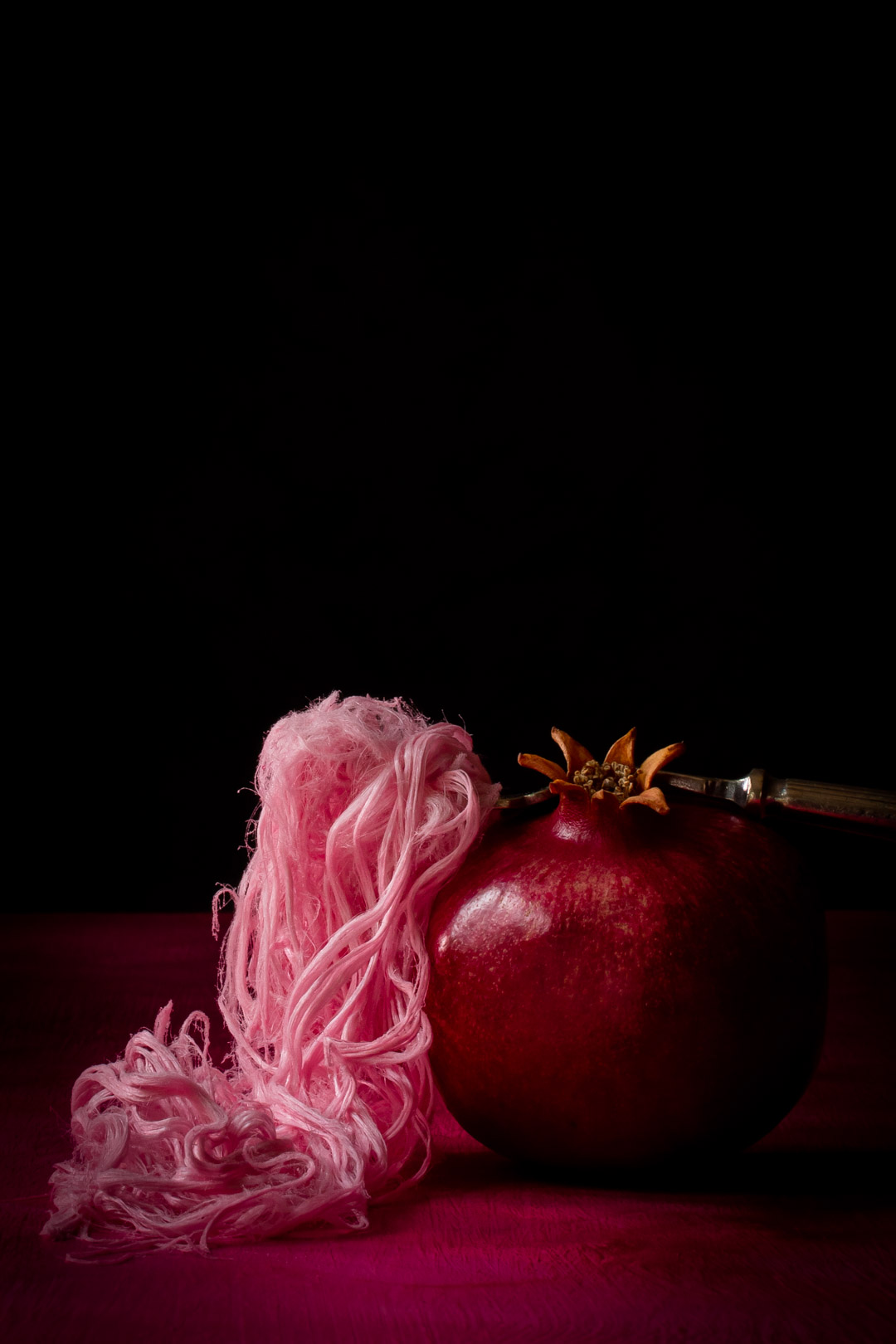
Pomegranate and rose daisy: Fancy mini winter sour
Print RecipeIngredients
- Rose honey syrup: 2 tablespoons wildflower honey
- 1 teaspoon rose petals
- 1 tablespoon hot water
- Pomegranate rose daisy: ¼ shot fresh lime juice
- 1/8 shot fresh lemon juice
- 1 bar spoon homemade bespoke grenadine syrup
- 1 bar spoon rose honey syrup
- 1 shot Dry Gin, Four Pillars used here
- Finely crushed ice to fill glass (approximately 1/2 cup)
- Glassware: vintage cocktail glass or miniature vintage wine goblet
- Garnish: single fresh strawberry, twist of rose Persian fairy floss, Pariya used here, straws to serve (for mini straws cut sugarcane or paper straws into halves)
Instructions
Rose honey syrup: Place honey, rose petals and hot water in a small pan
Heat on medium and then low heat to infuse rose petals with honey
Cool and strain rose honey syrup
Store in a clean glass jar in the fridge until needed
Pomegranate rose daisy: Prepare glass by chilling in freezer
Wash a fresh strawberry and set aside
Create a twist of Persian rose fairy floss by wrapping strands of fairy floss around the end of a small wooden cocktail fork – note that the divided end will be used to attach the twist to the glass so keep this end free – when twist is ready place on the rim of a test glass to hold this safely until needed – do not expose fairy floss to water or to heat or it will disintegrate
Prepare crushed ice by adding ice cubes to a clean tea towel and banging with a rolling pin
Use an ice spoon to carefully add ice to chilled glass, make a small cap at the top of the glass to hold the strawberry
Add lime, lemon, rose honey syrup, grenadine, and gin to a cocktail shaker with ice
Seal tins
Shake for 30 seconds
Strain carefully into prepared glass of finely crushed ice
Garnish with a single fresh strawberry by gently resting this on the crushed ice
Add the wooden cocktail fork with the fairy floss twist to the rim of the glass, taking care not to touch the fairy floss onto the ice or the drink, to avoid the fairy floss melting
Serve with straws
Notes
Hugo Ensslin (1916-1917). Recipes for mixed drinks. Second Edition. Hugo Ensslin: New York.
J.A. Grohusko. (1910). Jack’s Manual. McClunn: New York.
Charles Mahoney (1905). Hoffamn House Bartenders’ Guide. Richard K. Fox: New York.
Jacques Straub (1913). Straub’s Manual of Mixed Drinks. Francis Welsh: Chicago.
Jerry Thomas (1876 revision of 1862 imprint). The Bar-tender’s Guide: or how to mix all kinds of plain and fancy drinks. Dick & Fitzgerald: New York.
David Wondrich (2015). Imbibe. Perigree: New York.
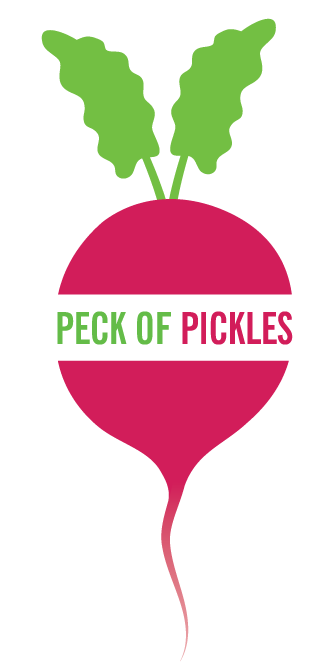
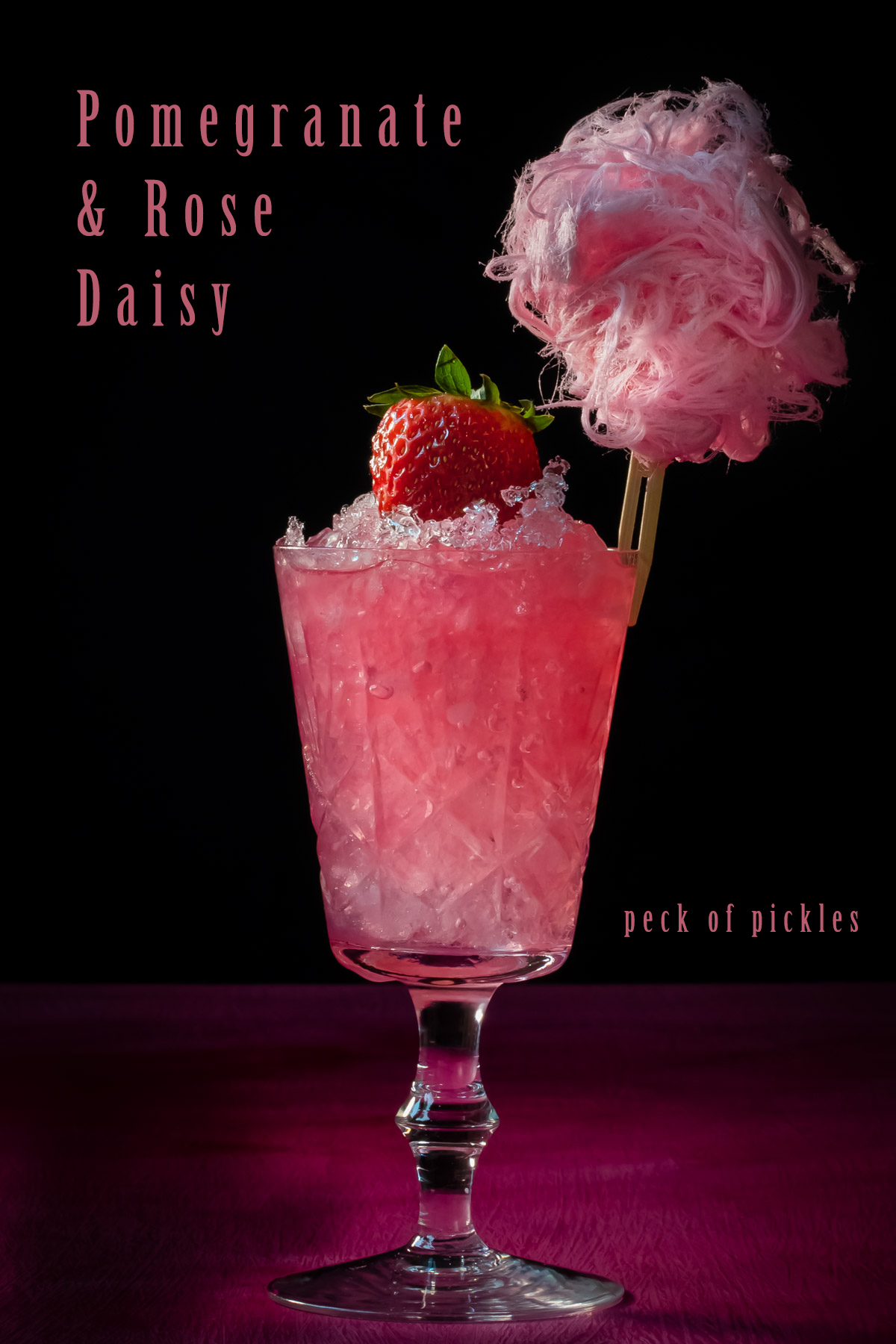
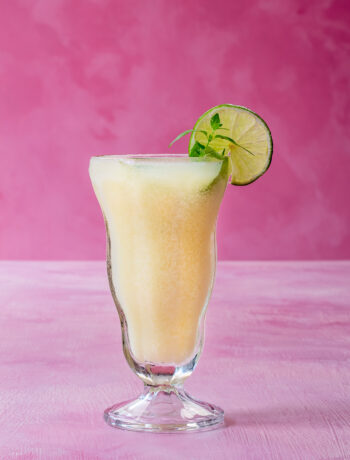
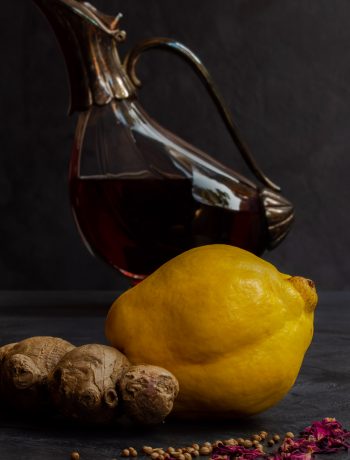
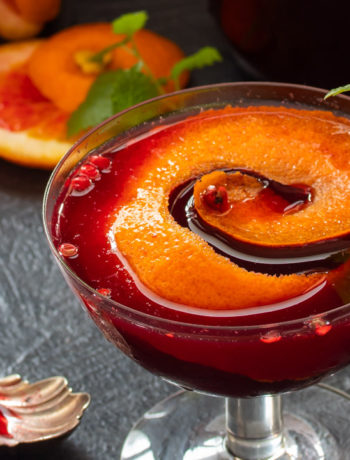
No Comments